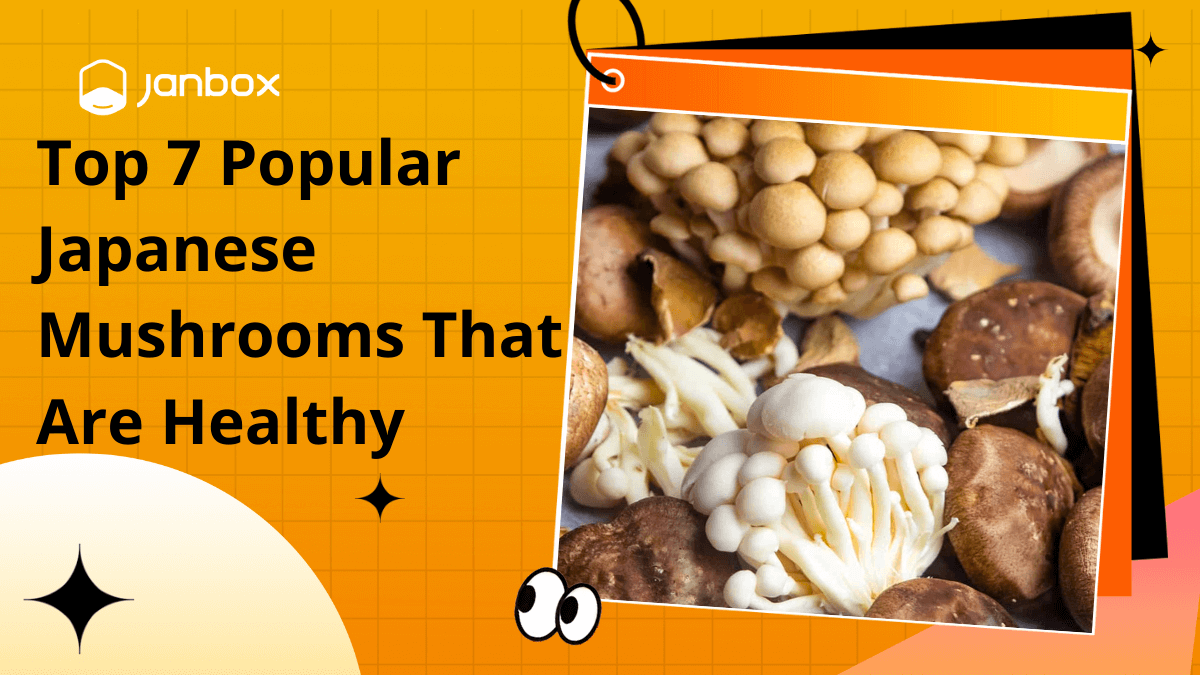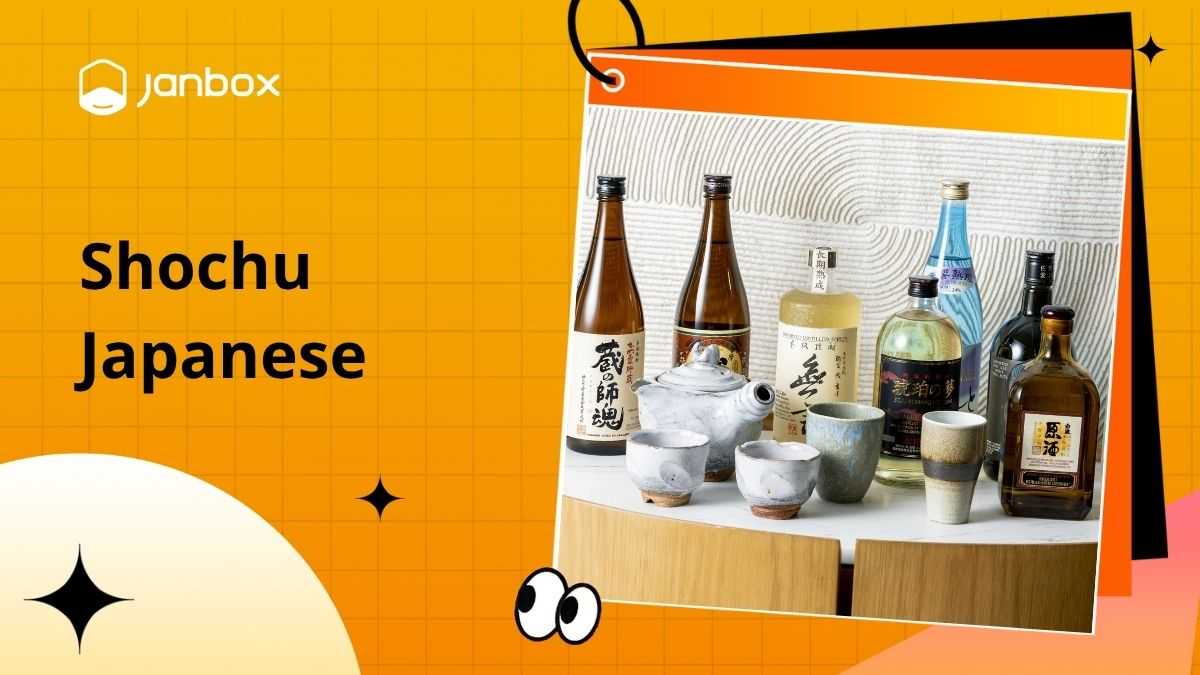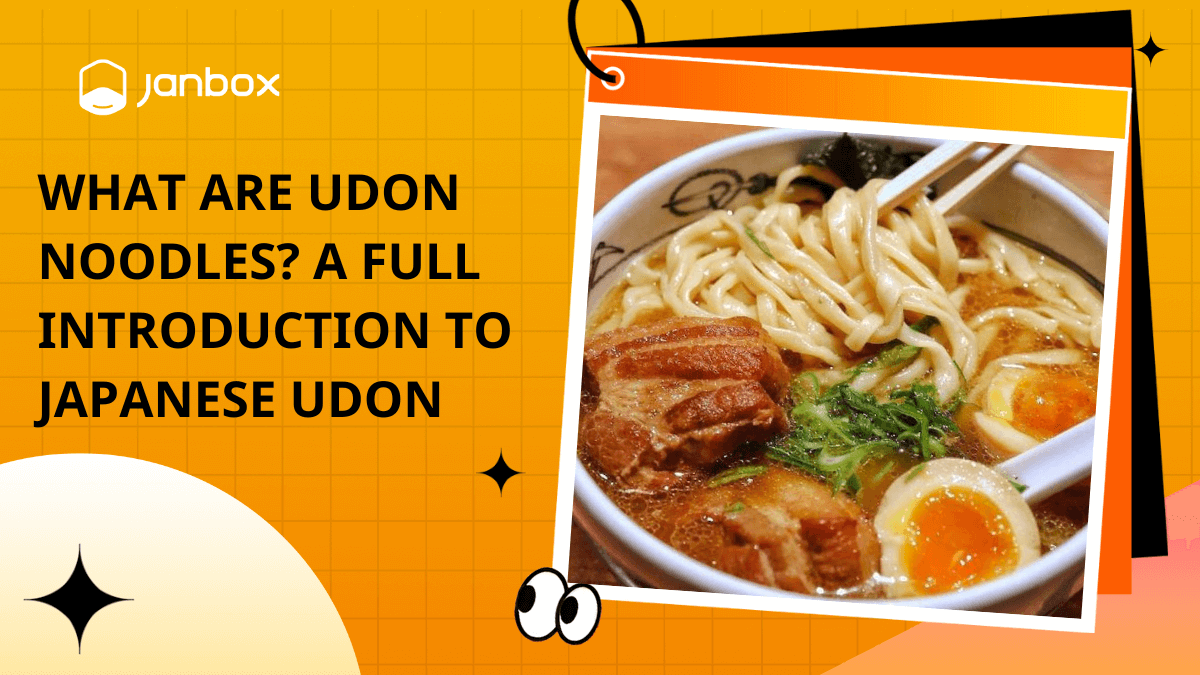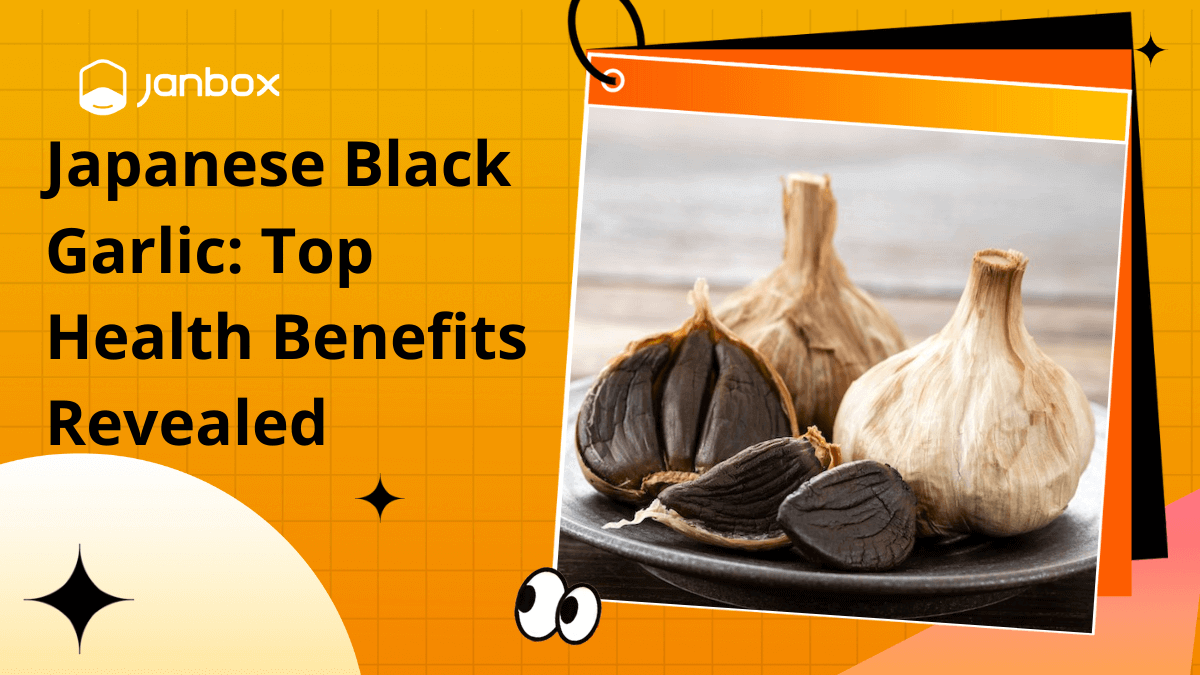Japanese cuisine is renowned for its balance, promoting health, longevity, and slimness, with Japanese mushrooms playing a key role. These unique fungi, distinct from animal-derived foods, are the only multicellular mushrooms we eat without fermentation. Their diversity sets them apart, with countless edible species worldwide. Curious about these gourmet Japanese mushrooms? Below, we explore eight types—some familiar, others likely new to you. Keep reading to discover more!
1. Japanese Mushrooms – A Gift From Mother Nature
Japan has traditionally considered mushrooms to be a traditional component of the fall season. As early as 4,000 years ago, ceramic mushrooms were consumed on a regular basis, according to archeological finds from prehistoric Jōmon settlements.
According to popular belief, mushrooms in Japan (so-called kinoko) are derived from the squishy fungi’s propensity to grow on and around trees (ki), particularly dead logs and rotting tree trunks.
Mushrooms in Japan have long been prized for their flavor and smell, as well as their nutritional worth. Can you picture all the valuable nutritional values packed into a single small piece of mushroom: fiber, protein, vitamins B and D, and a variety of minerals? But hold on, there’s more!
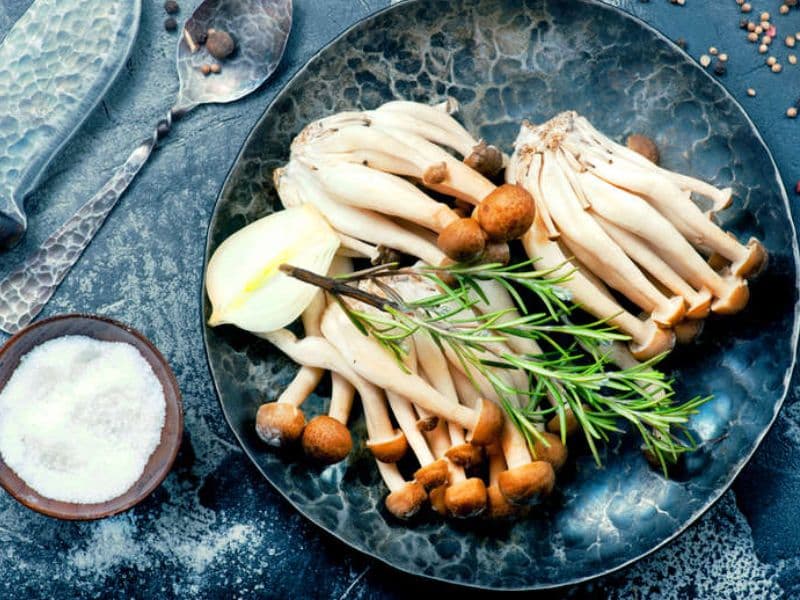
Japanese mushrooms are a low-calorie, low-cholesterol food that can help you diversify your diet. According to recent research, Japanese mushrooms may have anti-cancer qualities in addition to cardiovascular benefits and immune system-boosting properties. It’s no surprise that the Japanese adore mushrooms!
The humid environment of Japan supports over 5,000 types of mushrooms, only a few hundred of which are edible. There are numerous that might cause stomach pain or worse. That is why you should be aware of the most common varieties as well as how to cook Japanese mushrooms. Continue reading as we share these details with you.
>>> Read more: Common types of Japanese seaweed
2. Top 7 Popular Japanese Mushroom Types
Take 2 minutes to list all of the Japanese mushroom types you are familiar with. It’s okay if you’re perplexed because the majority of mushrooms sold and consumed on the market nowadays come from Europe and North America.
Unlike mushrooms from Europe and North America, mushrooms from Asia in general, and mushrooms in Japan in particular, have a distinct flavor and texture. So, if you’re looking for some new and interesting mushrooms, stay reading because you won’t be disappointed.
2.1 Shiitake: The Umami Powerhouse
Shiitake mushrooms, with their meaty texture and smoky umami flavor, are a Japanese cuisine staple. Sporting dark brown caps, they’re versatile in miso soups, stir-fries, and vegan dashi broth. Rich in vitamin D and immune-boosting lentinan, shiitake enhance both health and taste. A classic since the Edo period, they’re perfect for adding depth to dishes like miso soup.
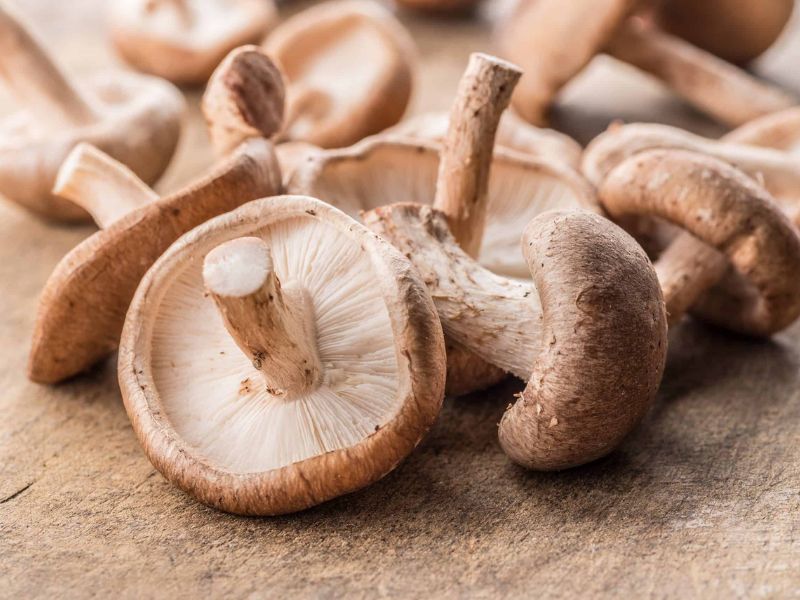
2.2 Maitake: The Dancing Mushroom
Maitake, the “dancing mushroom,” grows in feathery, earthy clusters, named for the joy of finding them. With a rich flavor, they’re ideal for tempura, sautés, or as a vegan meat substitute. Packed with beta-glucans, maitake helps manage cholesterol and supports immunity. Their frilly texture shines in a buttery sauté, making a perfect autumn dish.
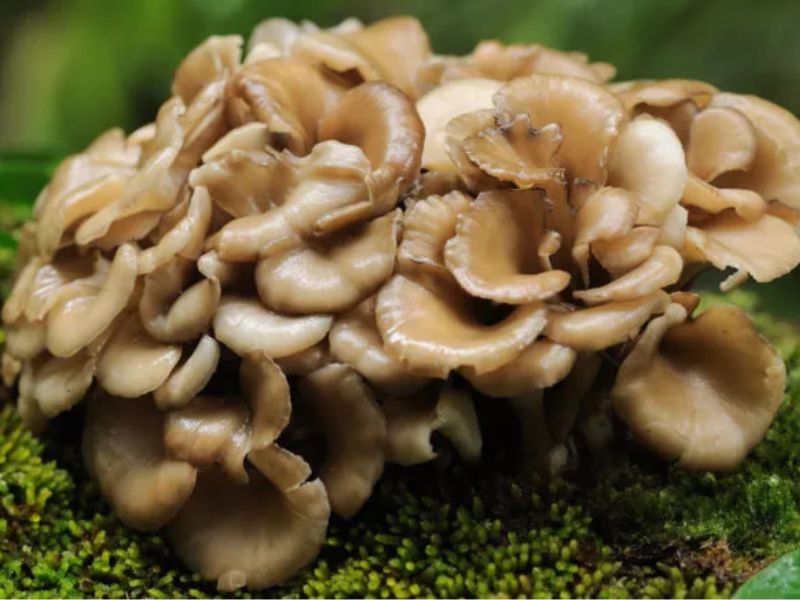
2.3 Eryngii: The King Oyster
Eryngii, or King Oyster, features thick, meaty stems with a mild raw flavor that transforms into rich umami when cooked. Perfect for grilling, stir-frying, or slicing into vegan “steaks,” it absorbs marinades better when cut lengthwise. Its chewy texture shines in plant-based barbecue dishes, making it a versatile star in modern cuisine.
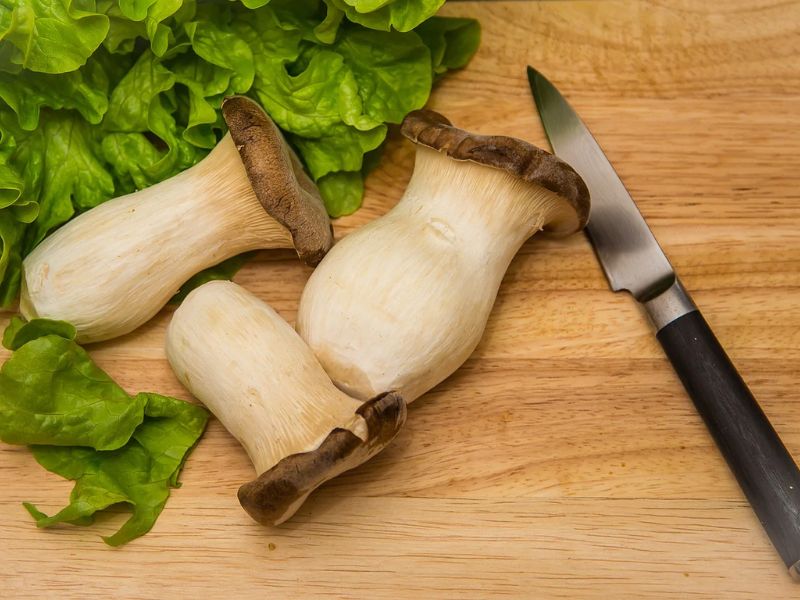
2.4 Enoki: The Delicate Strands
Enoki mushrooms, with their long, white, thread-like strands, offer a mild flavor and delicate crunch. Ideal for hot pots, salads, or lightly cooked soups, they retain their texture when roots are trimmed before cooking. Enoki’s subtle bite adds elegance to a steaming bowl of shabu-shabu, enhancing both flavor and presentation.
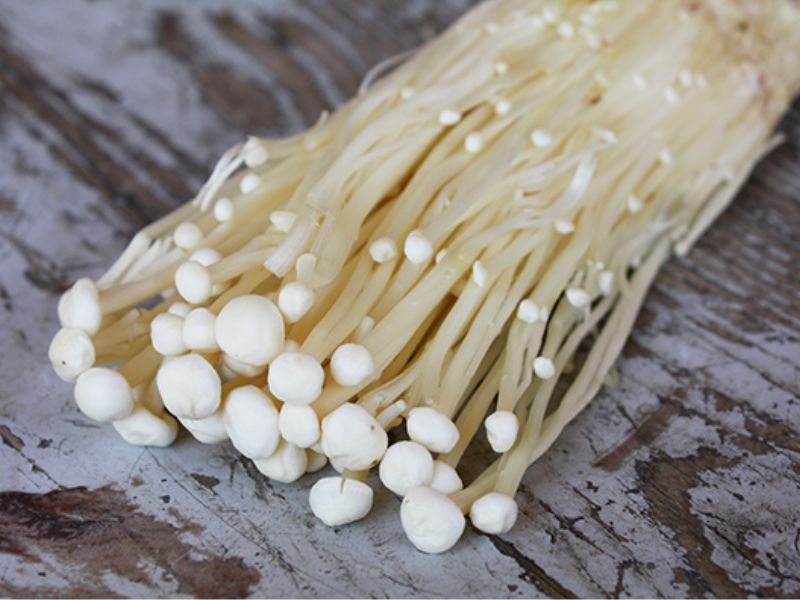
>>> Read more: Top 15 Japanese rice bowls you should try
2.5 Matsutake: The Autumn Treasure
Matsutake, a rare autumn treasure, is prized for its distinctive pine-like aroma. Grilled, steamed with rice, or featured in clear broths, it highlights its exquisite flavor. A symbol of luxury in Japanese culture, matsutake is often gifted in fall. Its unique fragrance elevates simple dishes like dobin mushi, a delicate steamed broth.
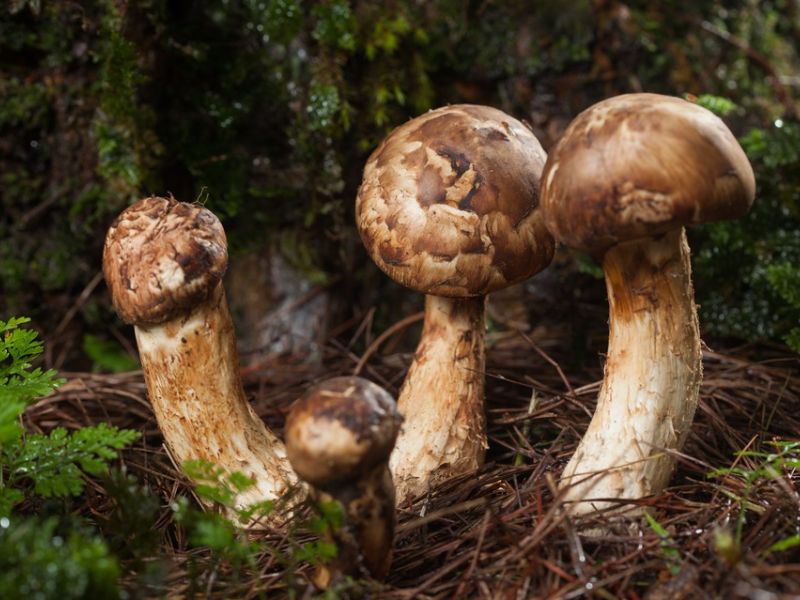
2.6 Nameko: The Nutty Gem
Nameko mushrooms, small and amber with slimy caps, deliver a nutty flavor and unique gelatinous texture. Perfect for miso soup, noodle dishes, or pickling, their coating enhances broths. Nameko’s slippery texture adds a cozy, comforting touch to winter miso soups, making them a beloved Japanese staple.
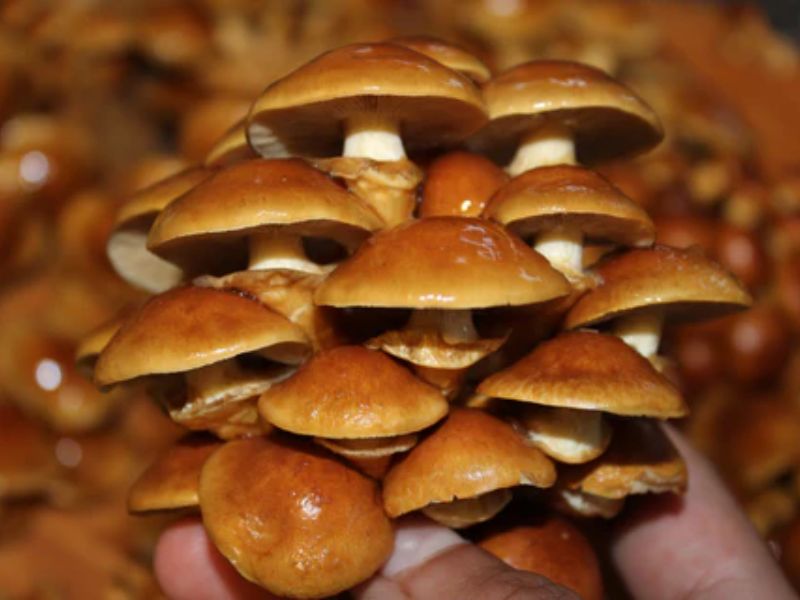
2.7 Shimeji: The Versatile Cluster
Shimeji mushrooms, small and nutty, grow in tight clusters with a subtle crunch. Available as brown buna-shimeji or white bunapi-shimeji, they’re versatile in stir-fries, soups, or garlic sautés. Their delicate texture pairs perfectly with soy sauce, making shimeji a standout in quick, flavorful stir-fry dishes.
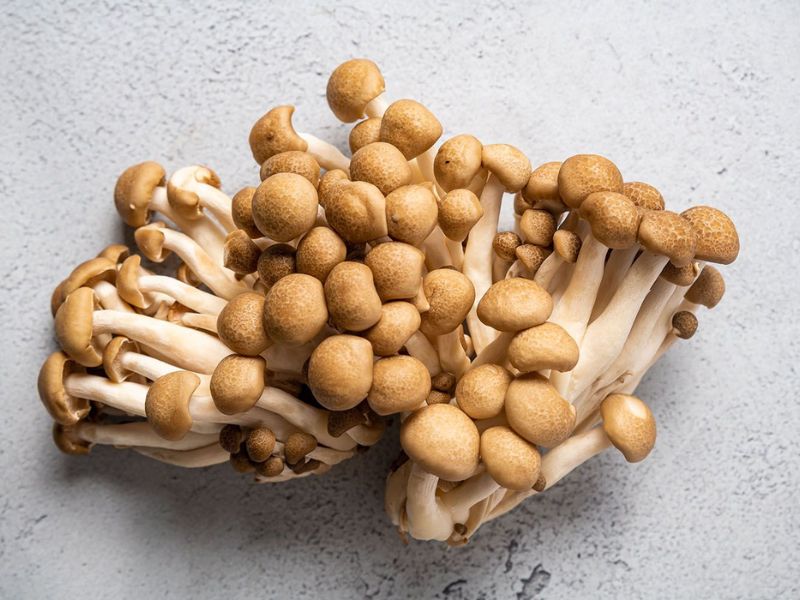
3. Health Benefits of Japanese Mushrooms
Japanese mushrooms are a nutritional treasure, appealing to health-conscious readers with their robust benefits. They enhance wellness while adding umami to dishes, making them a standout superfood. Here’s why they’re so valuable:
- Low-Calorie and High-Fiber: With minimal calories and ample fiber, Japanese mushrooms support digestion and detoxification, promoting a healthy gut (Live Japan highlights their cleansing effect).
- Rich in Essential Nutrients:
- Vitamin D (shiitake): Boosts bone health, especially in sun-dried varieties.
- B Vitamins (enoki): Fuels energy production and supports metabolism.
- Antioxidants (maitake): Combats oxidative stress, protecting cells.
- Powerful Health Benefits:
- Immune Support: Compounds like lentinan in shiitake, studied for immune-boosting effects, strengthen the body’s defenses.
- Cholesterol Reduction: Maitake’s beta-glucans help manage cholesterol levels, supporting heart health.
Anti-Cancer Potential: Research suggests shiitake and maitake compounds may inhibit tumor growth, offering promising wellness benefits.
>>> Read more: 15+ Unique Japanese Vegetables you may not find it anywhere
4. How To Choose Mushrooms In Japan For Cooking?
Like hobbits in their search for mushrooms, we chase these fungi to make flavorful Japanese mushroom dishes. But what makes a mushroom fit for consumption? Looking to use more mushrooms in your cooking? Discover how to have edible Japanese mushrooms here.
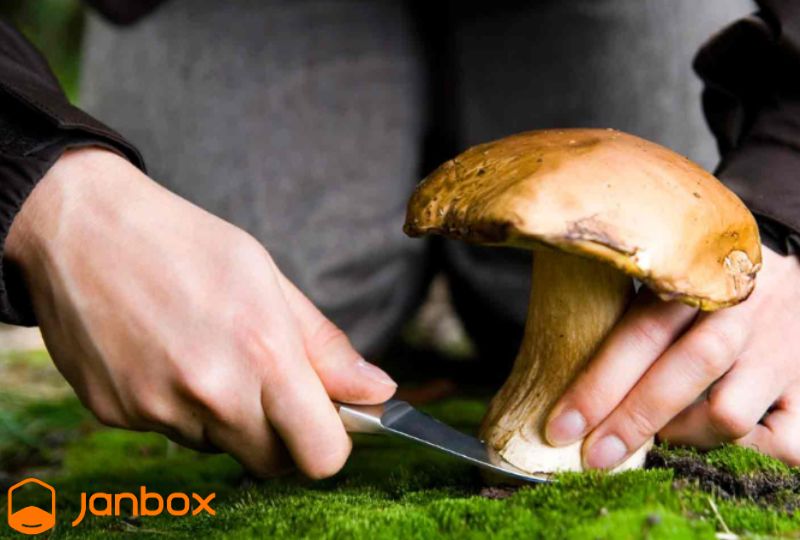
- Always select mushrooms that are dry, smooth, and firm
- Avoid mushrooms that are spotted, damaged, squishy, or slimy.
- Choose larger or medium-sized mushrooms rather than smaller ones
- Young mushrooms are characterized by their closed tops and compact nature, while mature ones have open caps that display the gills beneath. You can opt for either young or mature mushrooms depending on your taste.
5. How To Store Mushrooms In Japan?
Storing mushrooms effectively depends on how they are prepared. Before preparation, check for spoilage signs such as dark spots, sliminess, unpleasant odors, or wrinkles. Discard any mushrooms that are spoiled. While mushrooms can be stored in their original packaging, transferring them to a new container can help keep them fresh longer. Here’s Janbox’s summary of the techniques of Japanese for mushroom preservation.
- Store mushrooms without washing them: Soaking or washing before storage can result in excess moisture absorption, which accelerates spoilage. Instead, clean the mushrooms with a damp paper towel to remove any dirt.
- Prepare your mushrooms: Before storing, decide whether to keep mushrooms whole or cut into pieces, as this will influence their storage duration. If freezing, blanching or sautéing them beforehand can be a good option.
- Determine the best container for your mushrooms: Fresh mushrooms should be kept in a container that allows for airflow and lined with paper towels to absorb moisture, as mushrooms prefer dry environments. Wrap raw mushrooms in paper towels and store them in an open plastic or brown paper bag. For cooked mushrooms, an airtight container is ideal to keep them fresh.
Storing mushrooms is a breeze! If you’re looking to taste the exquisite flavors of Japanese mushrooms, check out Janbox Proxy Service for your order. Simply paste the name of the mushroom you want into the search box, process your payment, and wait for your fresh mushrooms to arrive.
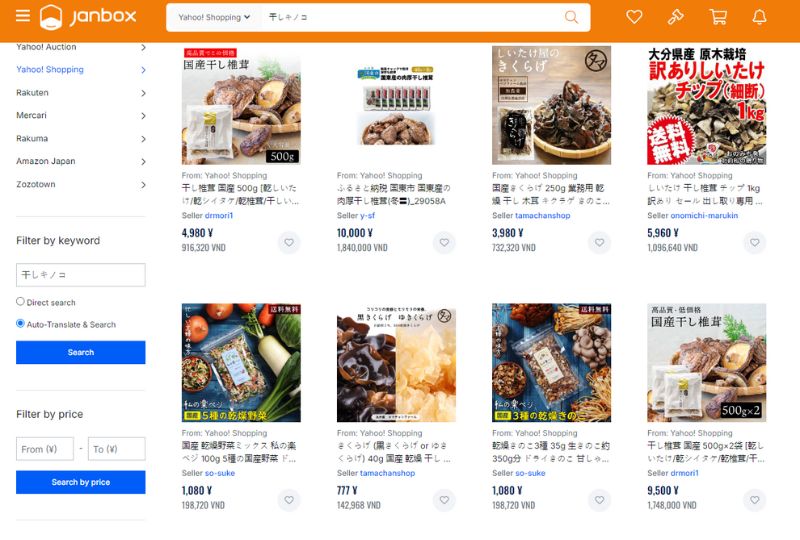
Janbox is your link to the global e-commerce market. We enable you to buy and auction billions of products from Japan and the USA, with efficient and speedy shipping to over 220 countries, plus optimized shipping costs and a free repackaging service.
>>> Read more: Best Japanese Proxy Service: What to Know and Who to Use?
6. Conclusion
There are numerous famous types of mushrooms in Japan listed above. Do you feel confident in listing some Japanese mushroom names? Many studies have found that Japanese mushrooms are richer in essential nutrients than commonly known. Including them regularly in your diet can result in significant health improvements over time! If you wish to order mushrooms from Japan, make sure to use Janbox Proxy Service for your purchases.
Website: https://janbox.com
Email: [email protected]

